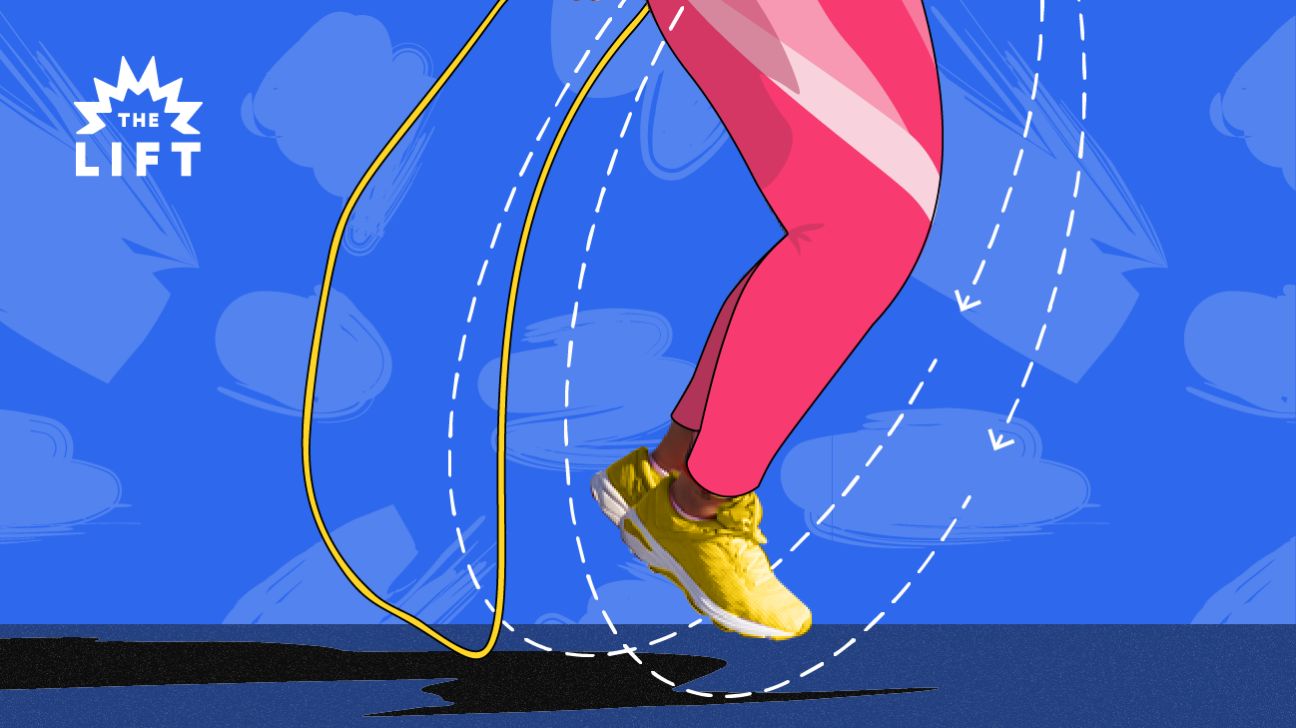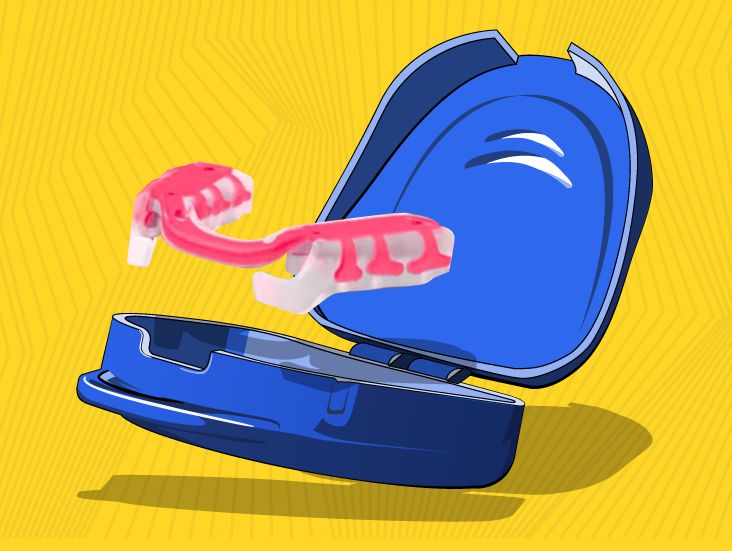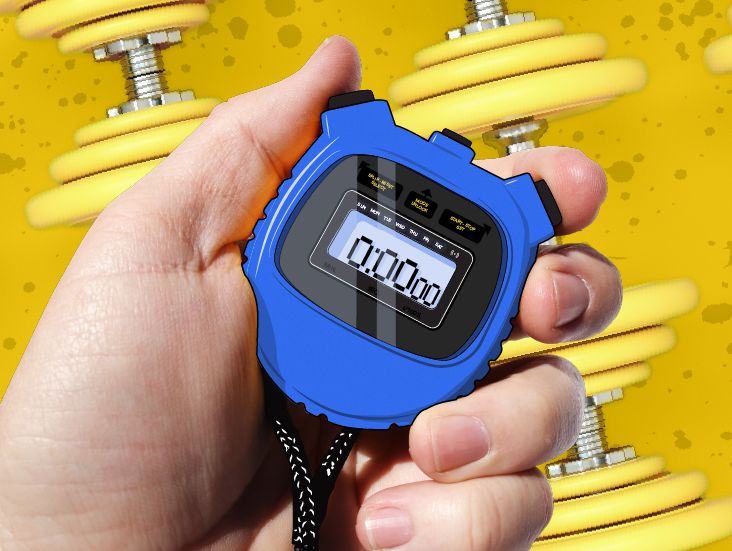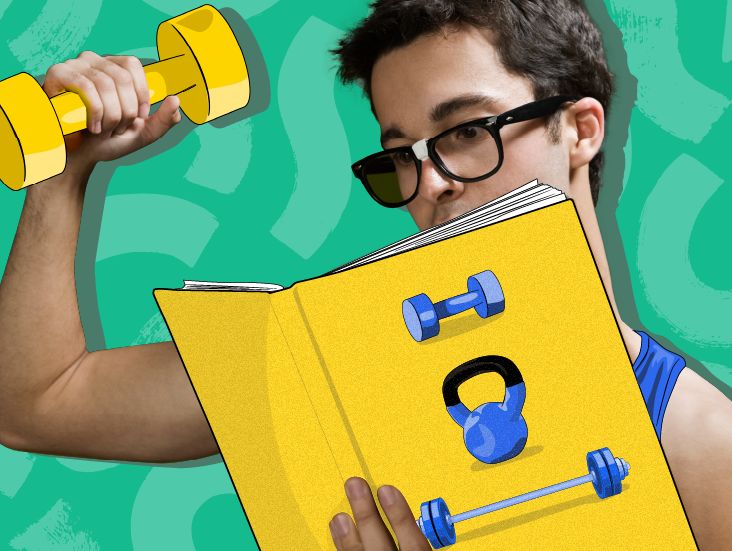You might use music to get you through your workout (shout-out to Drake). But what if your workout made music.
Welp, double-unders do!
“There’s an almost romantic, methodical rhythm to double-unders,” says David Newman CF-L1, Founder and CEO of Rx Smart Gear and The Rx Method Jump Rope Workshop — the go-to rope brand of many CrossFit Games athletes. “When someone is doing them well you can hear the mesmerizing whoosh-whoosh, tap-tap all throughout the gym.”
But their hypnotic power isn’t the only reason to do ‘em. Read on to learn more about the fitness benefits.
Typically, jumping rope entails the rope going under your feet one time. 1 jump = 1 rotation.
Double-unders require the rope to rotate under your feet 2 times per jump. 1 jump = 2 rotations.
(Aurally, it’s a whoosh-whoosh rather than a whoosh).
For starters, every single rotation works nearly every muscle from your trainers to your traps. Including, your grip muscles, quads, glutes, calves, achilles, hamstrings, biceps, and more.
Double-unders don’t just work your leg muscles, they work your explosiveness. “With every jump, you’re relying on the fast-twitch muscle fibers in your calves, achilles, and soleus,” says Newman.
Another muscle to add to that list: your ticker. “Double-unders are an easy way to get in cardiovascular movement without machines,” he says. At a time when the COVID-19 pandemic has effected gym attendance, and therefore access to treadmills and ellipticals, the jump rope is a cardio-tool you can rely on!
At first glance, you might think double-unders are easy — all you do is single-unders but faster… right? Actually, wrong.
“Double-unders look very similar to singles under (the rope moves linearly around the body, for example),“ says Newman. “But it’s a really different exercise.”
Step-by-step instructions
- Position the jump rope behind your heels, holding either end in both hands.
- Keeping core braced, shoulders down, and elbows close to your body, flip the rope over your head toward the front of your body, and jump to let it pass underneath you. Continue flicking wrists so that the rope passes under your feet a second time before you land.
- Return to the ground to complete the rep.
So, that’s how you complete a standard double-under. But how do you master it?
1. First, nail single-unders
“While double-unders require different time and more explosiveness than single-unders, we want to make people solid single-unders before having them try double-unders,” says Newman.
Why? Because the arm and hand position is the same. And both require the ability to bound.
“Doing low, quick single-unders will perpetuate the tight, quick wrist motions that you need to use during double-unders,” says Newman. Essentially, double-unders combine this quick wrist flick (say that 10 times fast!) combined with a substantial bound.
2. Forget the rope
Contrary to common belief, the key to crushing dubs *isn’t* the speed that the rope moves — it’s how high you jump. And that’s exactly why Newman recommends people practice the jump.
But rather than practicing the jump while doing single-unders, he recommends people do it with no rope in hand. Why? The rhythm is different.
While you practice, there are two key things to avoid:
- Bending your knees
- Piking your legs
“There is going to be some knee flexion with the double-under because you’re recruiting more muscles to propel you upward,” he says. But we’re not talking cannonball-esque knee-bending.
How high to get double-under?
Not sure if you’re jumping high enough? Newman recommends investing in a Bounding Target Trainer, which is designed to attach to the rig 8 to 10 inches above your head. Then, practice jumping up to hit the (soft) target 5 to 10 times in a row.
“When the only thing someone is focused on is getting your head to hit the target, their body will naturally do what it needs to do in order to hit that height,” Newman says.
3. Practice double off the deck
Double off the deck entails exactly what it sounds like it does: Trying a double-under right as you jump off the deck (ground).
“It entails getting ready to go, putting the rope in motion, and as soon as the rope comes around the first time you force it to come around a second time before returning your feet to the ground,” explains Newman.
This is in contrast to what beginners typically do: Warming up with a few single-unders before trying a double-under.
“An under-rated exercise, double off the deck allows people to learn how to place the rope in the right position as soon as it leaves the ground,” says Newman. “It also teaches patience and helps people realize the rope doesn’t need to be moving really fast for a double-under to happen.”
If you can’t get a double-under within your first 10 attempts, stop. “Don’t beat a dead horse,” says Newman. Instead, try the 2-1 drill.
4. Take on the 2-1 drill, then try the 2-2 drill
“This entails doing two low, quick single-unders immediately into one, high jump double-under, then stopping,” explains Newman.
The most important part? Stopping after you get the double-under. This keeps you from developing bad habits.
“If someone can do the 2-1 sequence cleanly in a row, then we have people try 2 single-unders followed by 2-double unders, and then stopping,” he says.
5. Keep at it
Once you can do 5 sequences of the 2-2 drill in a row, the next step is to try doing more double-unders in a row.
“Go until your form breaks down,” says Newman. “When you feel your form start to breakdown stop for the day to keep from reinforcing poor form.”
If you’re gonna dub well, you need the right rope.
Newman says the best jump rope, hands down, is the Original Rx Jump Rope.
To pick the right length, step one foot into the middle of the rope. Then, pull the cord along your body. “We don’t ever want the cord to be longer than the bottom of your sternum [chest],” he says.
(To be clear: When he says “cord” he means the “cord,” and not “handles.”)
Even at that length, the rope *could* be too long for someone who keeps their hands very close to their body while they jump.
If you notice that the rope is ricocheting off the ground differently than before, the rope is too long. Ditto goes if the rope changes pace as it nears your feet.
“When the rope is long, people will feel the messiness and will respond with less-efficient form,” says Newman. “So we really want to avoid that.”
While it’s common for double-unders to be classified as a CrossFit exercise, they’re an exercise that can and should be enjoyed by all types of exercisers.
Get your (right-sized!) rope today and start reaping the benefits one jump at a time.
Gabrielle Kassel (she/her) is a queer sex educator and wellness journalist who is committed to helping people feel the best they can in their bodies. In addition to Healthline, her work has appeared in publications such as Shape, Cosmopolitan, Well+Good, Health, Self, Women’s Health, Greatist, and more! In her free time, Gabrielle can be found coaching CrossFit, reviewing pleasure products, hiking with her border collie, or recording episodes of the podcast she co-hosts called Bad In Bed. Follow her on Instagram @Gabriellekassel.






